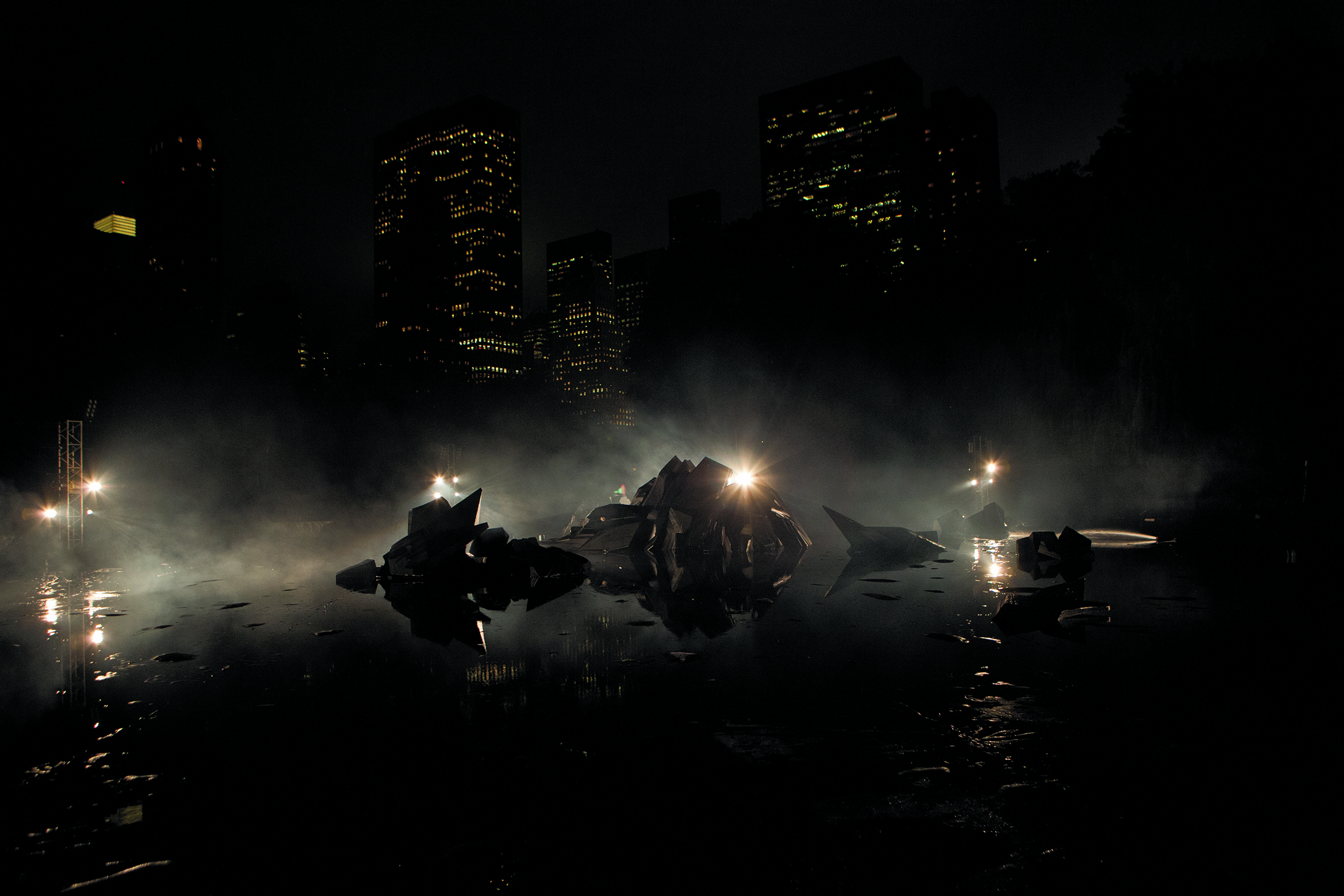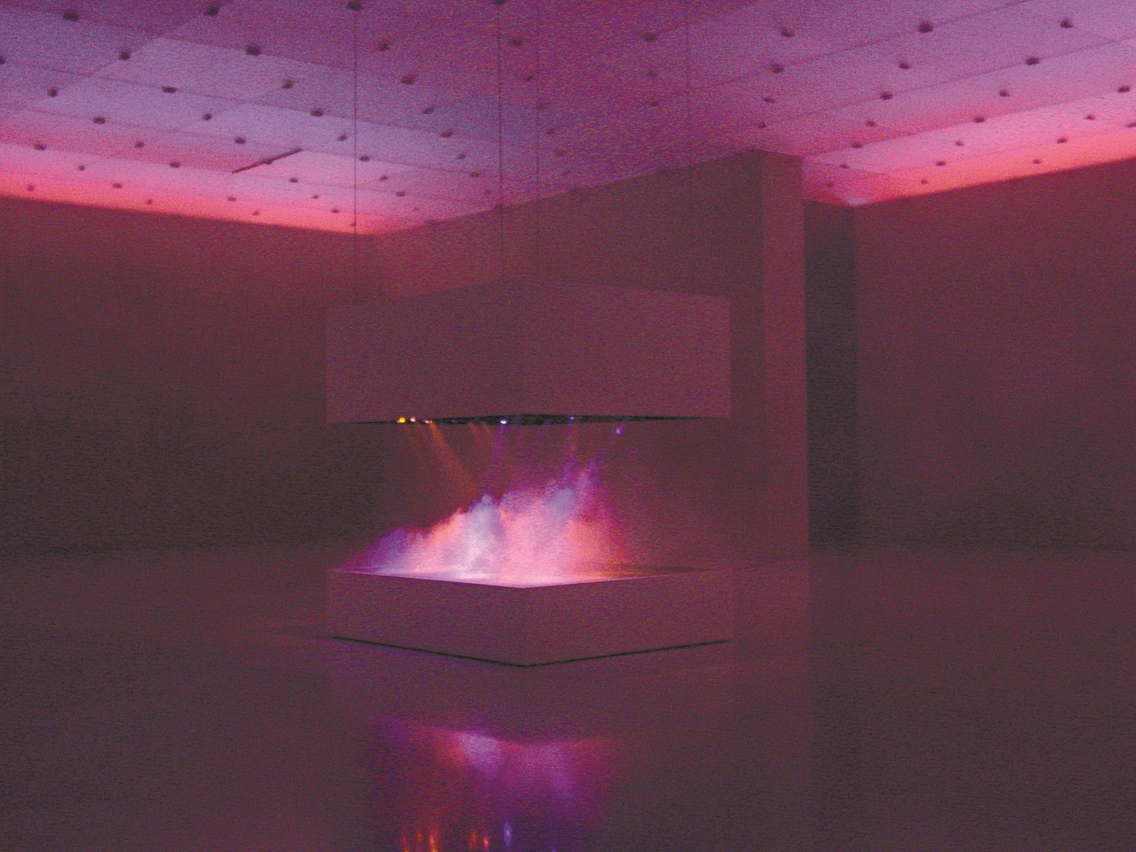Amelia Barikin is a recipient of a 2015 Artist or Curator Residency (ACR) grant, supported by the Copyright Agency’s Cultural Fund and managed by Museums & Galleries of NSW. Open to regional galleries nationwide, the program supports artists and curators to research and develop new work.
Barikin received her residency to work with TarraWarra Museum of Art in Victoria to develop a major exhibition of work by renowned international artist Pierre Huyghe (pronounced ‘Weeg’). With the exhibition opening later this month, M&G spoke with Barikin about her residency and research.
M&G: This is Huyghe’s first solo exhibition in Australia, what can people expect to see from this exhibition?
AB: This is the first solo exhibition by Pierre Huyghe in Australia. It includes film, sculpture, photography, installation, works on paper, and living ecosystems – ants and spiders inhabit the gallery for the duration of the show. Rather than presenting a traditional retrospective or chronological survey of Huyghe’s whole practice, working closely with the Director Victoria Lynn, I chose to focus on the different rhythms of time and temporality at work in Huyghe’s projects. In many ways it is an exhibition about time, with a strong science fictional feel.
M&G: What was involved in working with TarraWarra as an external curator and also with this renowned contemporary French artist?
AB: Working at TarraWarra Museum of Art in collaboration with the director Victoria Lynn has been fantastic. This is a beautiful museum in the middle of the Yarra Valley, and from a curatorial perspective the space is very flexible. Victoria approached me with the idea to collaborate on the exhibition in 2013, and we met with Pierre Huyghe to discuss the concept and scope of the project. Pierre Huyghe is an extraordinarily generous artist, and our ongoing conversations with him have been central to the development of the curatorial framework. In addition to a lot of intense dialogue and research, this exhibition has taken us in some surprising directions, like learning about the behavior of different ant species from invertebrate specialists, and figuring out how to make the museum into an appealing home for spiders!
"In many ways it is an exhibition about time, with a strong science fictional feel... "
M&G: What were the benefits of this residency to your curatorial practice?
AB: The benefits are huge. This is the most ambitious curatorial project I have ever undertaken. I have learnt an enormous amount from Victoria Lynn, whose practice I have admired for many years. I first met Victoria when I was working as a curatorial intern at the Australian Centre for the Moving Image in 2003 – she was then the Director of Creative Development for ACMI, curating great shows like ‘Deep Space: Sensation and Immersion’. Victoria’s dedication to realising the artist’s vision is tireless, and she has taught me a lot about diplomacy, patience, and the need to think creatively in terms of resources, and materials. As a privately funded, not-for-profit regional gallery, TarraWarra is also unlike any other museum or gallery I have collaborated with –it is smaller than a state gallery, so more flexible, the staff are terrific, and it also has a unique local following in the Yarra Valley. I am excited about connecting with our regional audiences.
M&G: You completed your PhD on Huyghe at the University of Melbourne in 2008. Has this exhibition book ended this long running research for you, or is this just the next chapter?
AB: I have been wanting to bring Pierre Huyghe’s work to Australian audiences for over ten years, ever since I first met with him as a PhD researcher in 2004. Although his projects have been included in several group exhibitions in Australia – many people would remember the rainforest Huyghe created inside the Sydney Opera House for Carolyn Christov Bakargiev’s Biennale of Sydney in 2008 – he has never had a solo exhibition here. I am extremely grateful to Museums & Galleries of NSW for the opportunity to finally realise this project as a curator in residence.
"In addition to a lot of intense dialogue and research, this exhibition has taken us in some surprising directions, like learning about the behavior of different ant species from invertebrate specialists, and figuring out how to make the museum into an appealing home for spiders!"
M&G: Where can we find out more about your work and projects?
AB: I am currently working as a Postdoctoral Research Fellow in the School of Communication and Arts at the University of Queensland, and this exhibition is also part of my art history research there. Since moving to Brisbane from Melbourne, my work has primarily focussed on the intersection of art and science fiction – a topic that comes out of my earlier MIT Press book on Huyghe (Parallel Presents: The Art of Pierre Huyghe). One of my first publications on art and science fiction was the anthology Making Worlds: Art and Science Fiction, which I co-edited with my friend and colleague Helen Hughes in 2013. I am endlessly fascinated by the idea of time travel – both art history and science fiction are great platforms for time travellers!
Interested in a curatorial or artist residency at your gallery? Applications for the 2016 ACR program are now open!
Find out more at: mgnsw.org.au/sector/funding/grants-we-administer/gallery-grants/artist-or-curator-residence/
This project has been supported by an Artist or Curator Residency grant.
The Artist or Curator Residency program is supported by the Copyright Agency’s Cultural Fund, and is managed by Museums & Galleries of NSW.





